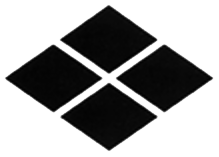Yotubishi Kawari-nuri Sakura (Cherry) Bark Pattern c. 1955-1959
by Jim Mamoulides, April 24, 2017, updated June 7, 2024
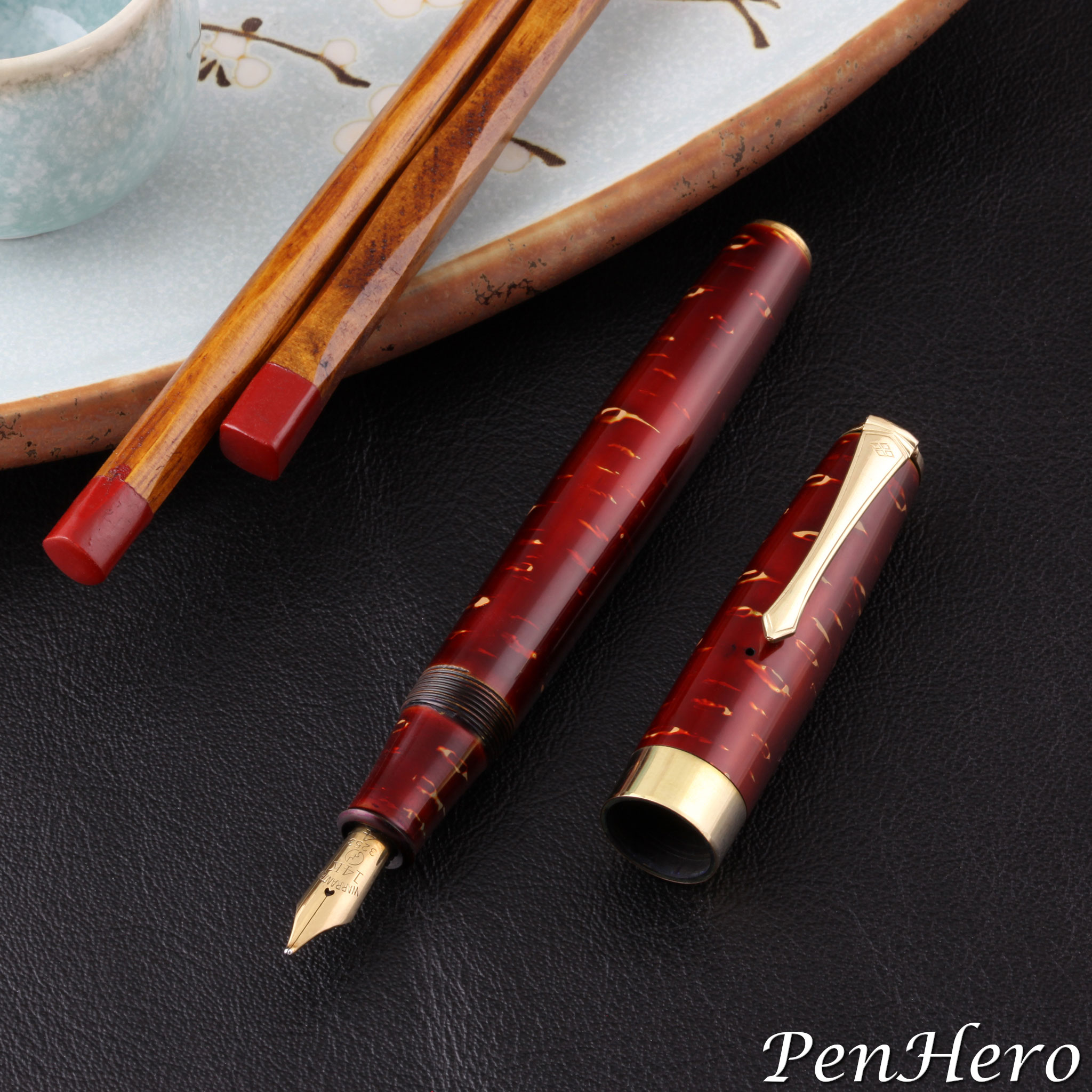 Yotubishi Kawari-nuri sakura (cherry) bark pattern c. 1955-1959
Yotubishi Kawari-nuri sakura (cherry) bark pattern c. 1955-1959
Deep, Rich Cherry Bark
This is a c. 1955-1959 Yotsubishi fountain pen decorated with a Kawari-nuri technique sakura (cherry) bark pattern. The free form artwork recreates the pattern using contrasting yellow/gold elements in the red urushi lacquer base. It’s 5 1/4 inches long with gold filled trim and uses a squeeze type filler, possibly aerometric (which would require a feed tube), that dates the pen to the 1950s, following the lead of the filler design in the Parker 51 Aerometric. The gold nib is stamped WARRANTED over 14K over the JIS mark over 3253 over 4.
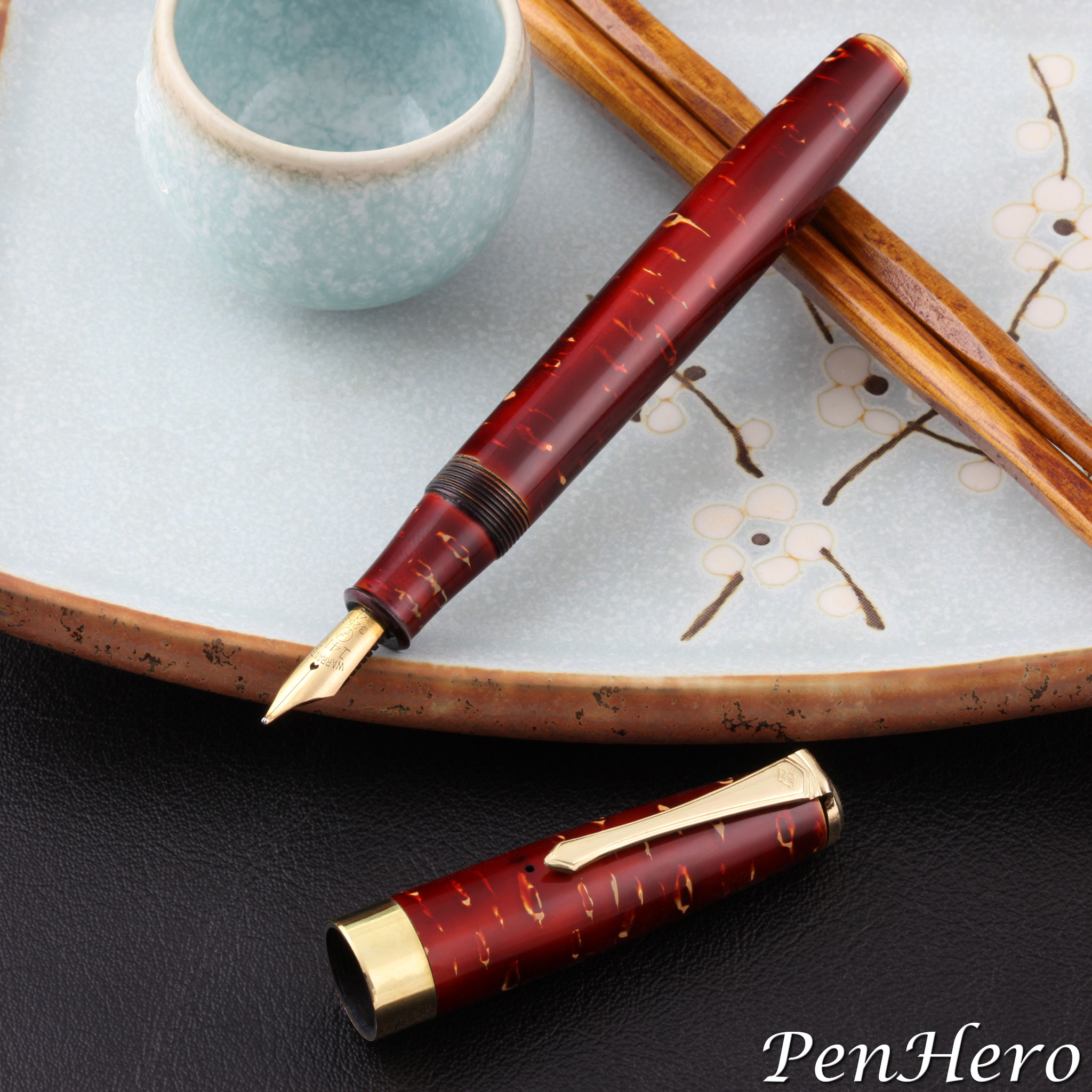 Yotubishi Kawari-nuri sakura (cherry) bark pattern c. 1955-1959
Yotubishi Kawari-nuri sakura (cherry) bark pattern c. 1955-1959
The Japan Industrial Standard (JIS) marking for fountain pen nibs was instituted in 1951 and gold nibs intended for export were required to have the JIS mark in 1952. Gold nibs intended for domestic sale were required to have the JIS mark in 1953. Nibs are stamped with the JIS mark and a four digit number indicating the maker. The JIS nib number 3253 is by Teikoku Kinpen, with the brand name Kinpen, according to the list of JIS numbers in Fountain Pens of Japan. The nib may or may not have been original to the pen.
Kawari-nuri
Many forms of urushi lacquer based artwork on Japanese pens are often mis-grouped under the heading maki-e, which literally means sprinkled picture. Kawari-nuri is not considered maki-e, but is a multilayered urushi technique, often called “free pattern,” as the artist can freely decorate the urushi layers with new ideas. This could mean altering the surface with patterns, textures or swirls, adding colors or other decorations that are revealed when the surface is sanded smooth. Kawari-nuri artwork on pens are not likely to be signed by the artist.
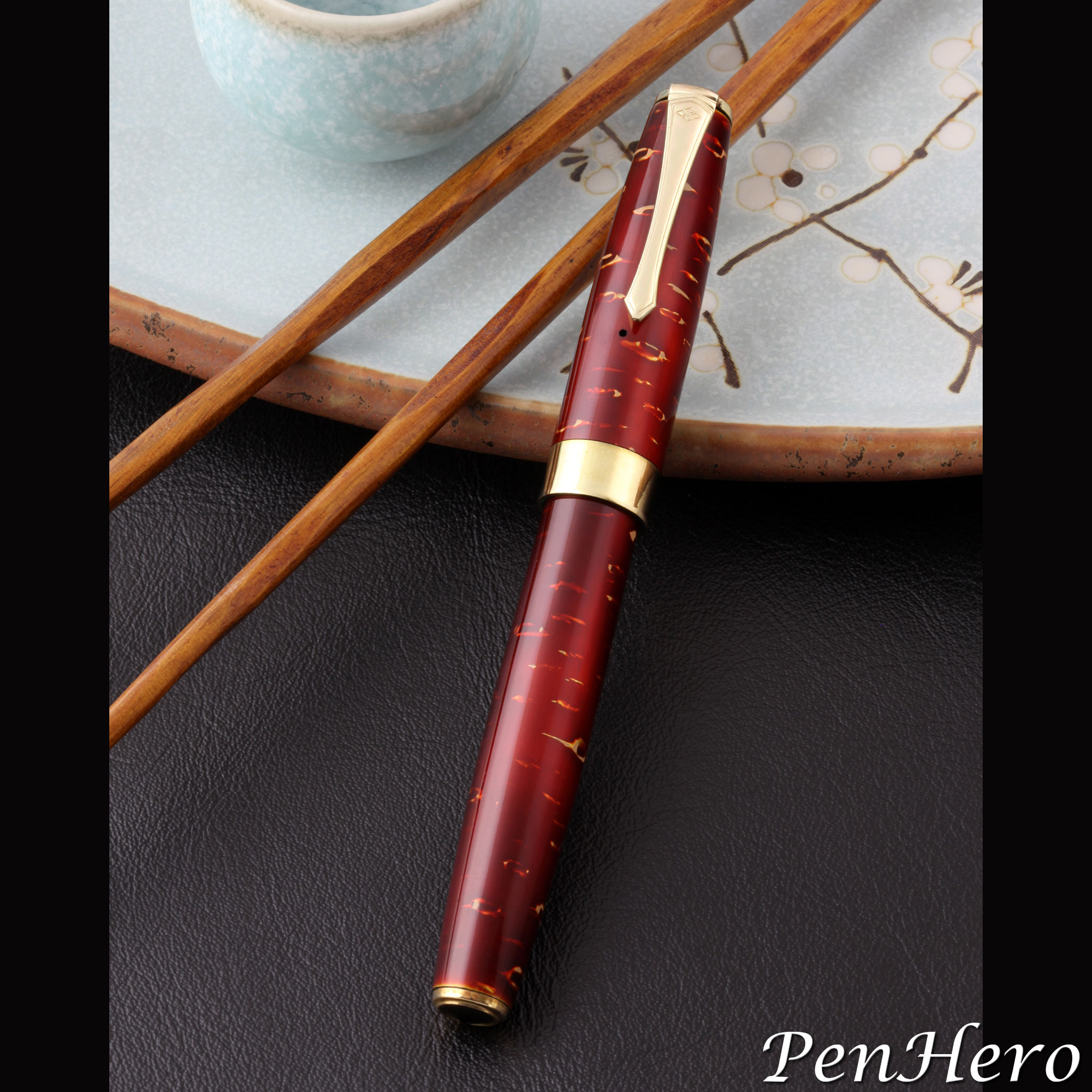 Yotubishi Kawari-nuri sakura (cherry) bark pattern c. 1955-1959
Yotubishi Kawari-nuri sakura (cherry) bark pattern c. 1955-1959
Japanese cherry tree bark has a distinctive pattern, and is featured in wooden objects, such as boxes, frames, and vases. The free form artwork on the cap, barrel and nib section of this pen is intended to recreate the pattern using contrasting yellow/gold elements in the red urushi lacquer base. This artwork technique was used on several Yotsubishi models in the 1950s, each having different cap, clip, and nib unit designs.
Four Diamond Pens
Ishi-Shoten, also known as Ishi & Co., was established in Tokyo in 1925 by pen maker Yoshinosuke Ishii. Following the lead of Pilot, who began making maki-e decorated pens in the 1920s, Ishi-Shoten, though a small company with initially as few as ten workers, began competing by making less expensive maki-e pens. Ishi-Shoten used the four diamond trademark, yotsubishi in Japanese, and the mark can be found on the clip top on most pens and sometimes on the cap band. In reference materials, on the pens, and in catalogs, there are three spellings, Yotsubishi, Yotubisi, and Yotubishi, all pronounced the same. The Yotsubishi four diamond mark on this pen appears on the top face of the clip. The squeeze filling unit is also stamped with the logo, along with "YOTUBISI." Fountain Pens of Japan makes the distinction that the company name became Ishi-Shoten Yotsubishi, but the brand name was Yotubishi. The company ceased operations in 1984.
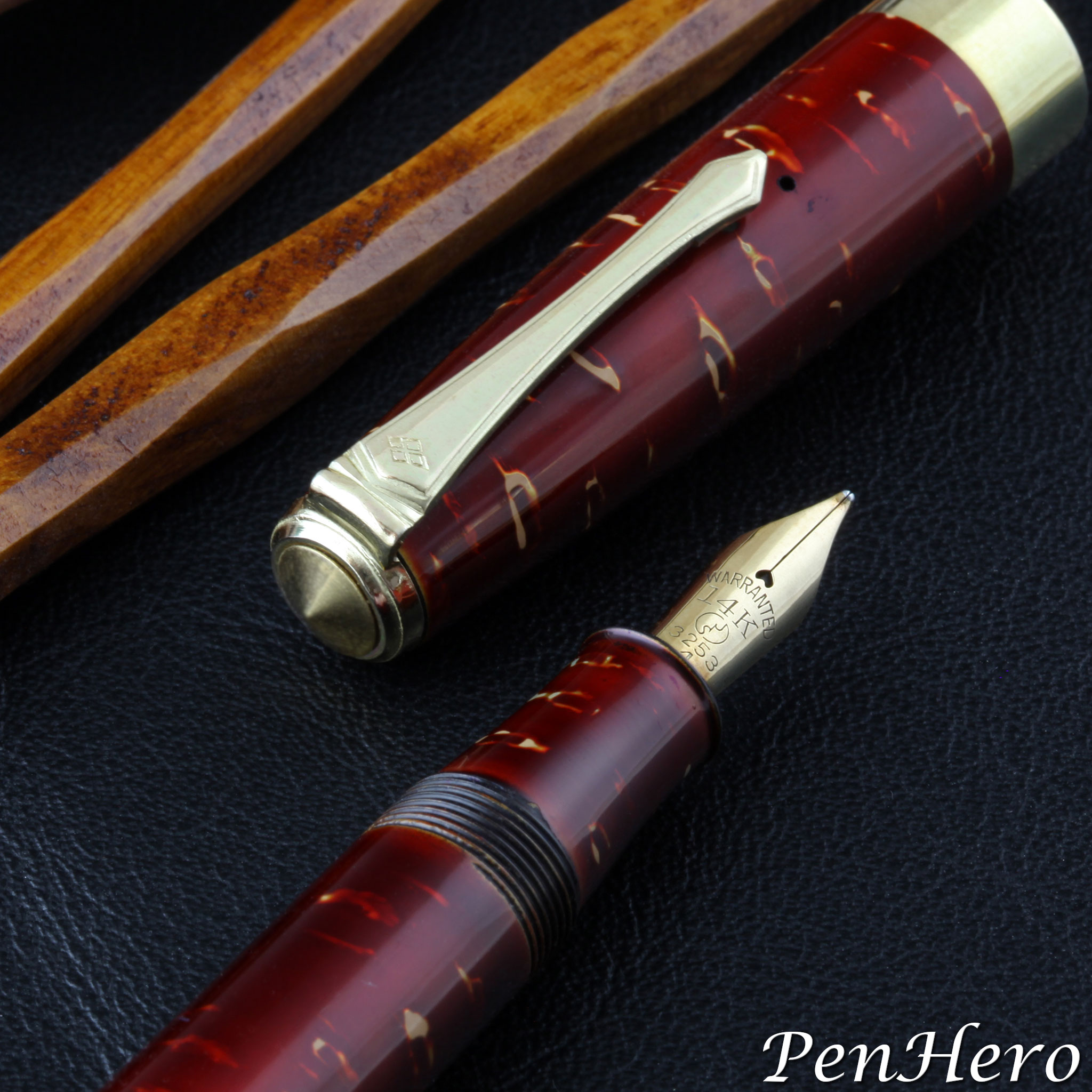 Yotubishi Kawari-nuri sakura (cherry) bark pattern c. 1955-1959 nib detail
Yotubishi Kawari-nuri sakura (cherry) bark pattern c. 1955-1959 nib detail
Having now seen several Yotsubishi pens, I can say that they are all very well made, and the artwork on decorated pens like this one is excellent. The fit and finish of the trim pieces is tight and shows little wear. It’s a little longer and fatter than many contemporary Japanese pens from the 1950s. I did not fill or write with the pen, as it was on loan for photos, but the nib feels very smooth with dry write testing. The squeeze filler is in excellent condition, and I would imagine it would work as well as many other similar units from the same era.
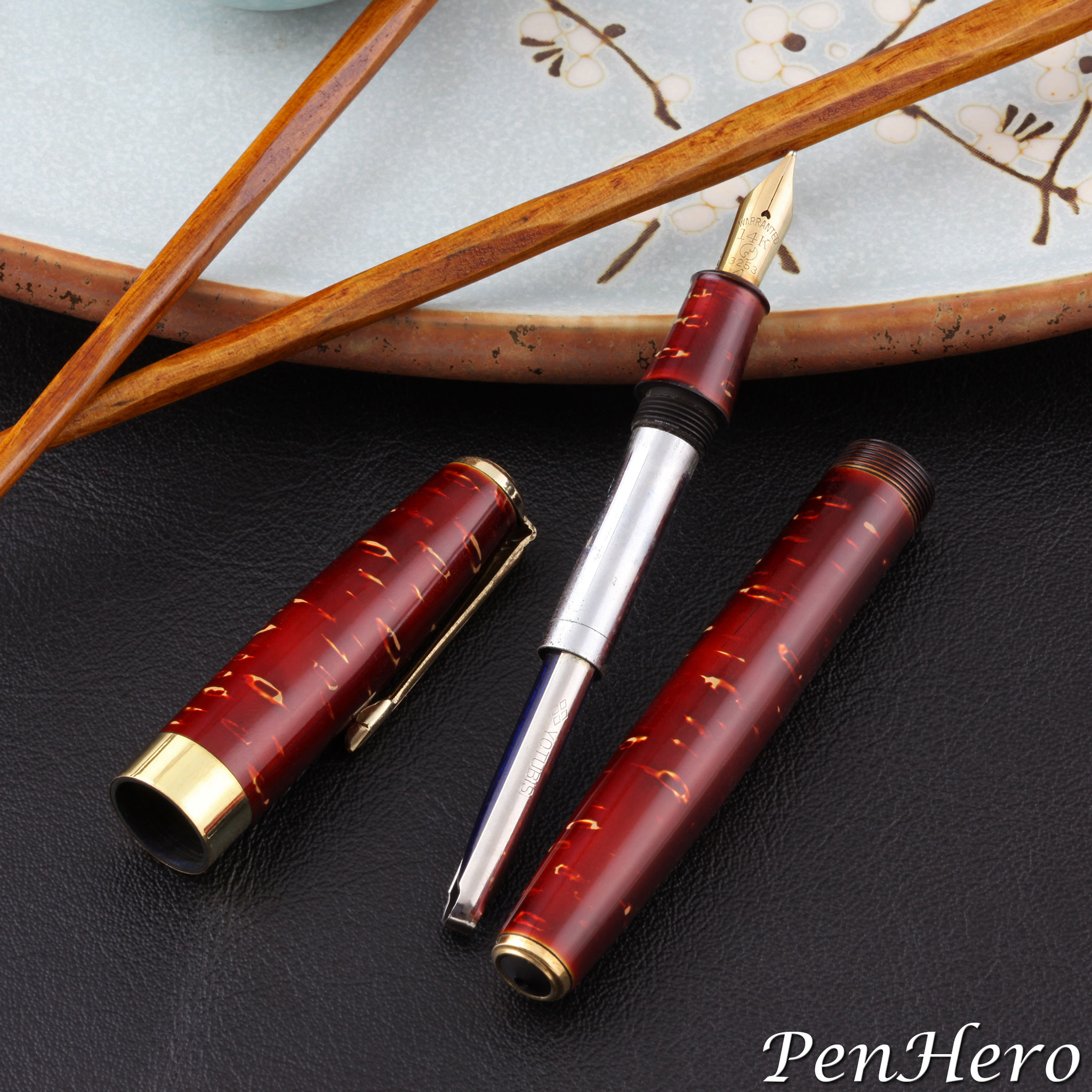 Yotubishi Kawari-nuri sakura (cherry) bark pattern c. 1955-1959
Yotubishi Kawari-nuri sakura (cherry) bark pattern c. 1955-1959
This is a very beautiful pen. The artwork is eye-catching and yet very simple. Many different beautiful Yotsubishi art pens were made in the 1950s. They are very uncommon in the United States and would enhance any Japanese pen collection.
Acknowledgement
Thanks to Stan Klemanowicz for loaning this pen for photographs.
References
Fountain Pens of Japan by Andreas Lambrou and Masamichi Sunami, © 2012 Andreas Lambrou Publishers, Epping, Essex, United Kingdom, pages 28, 101-118
Interact
Comments on this article may be sent to the author, Jim Mamoulides


